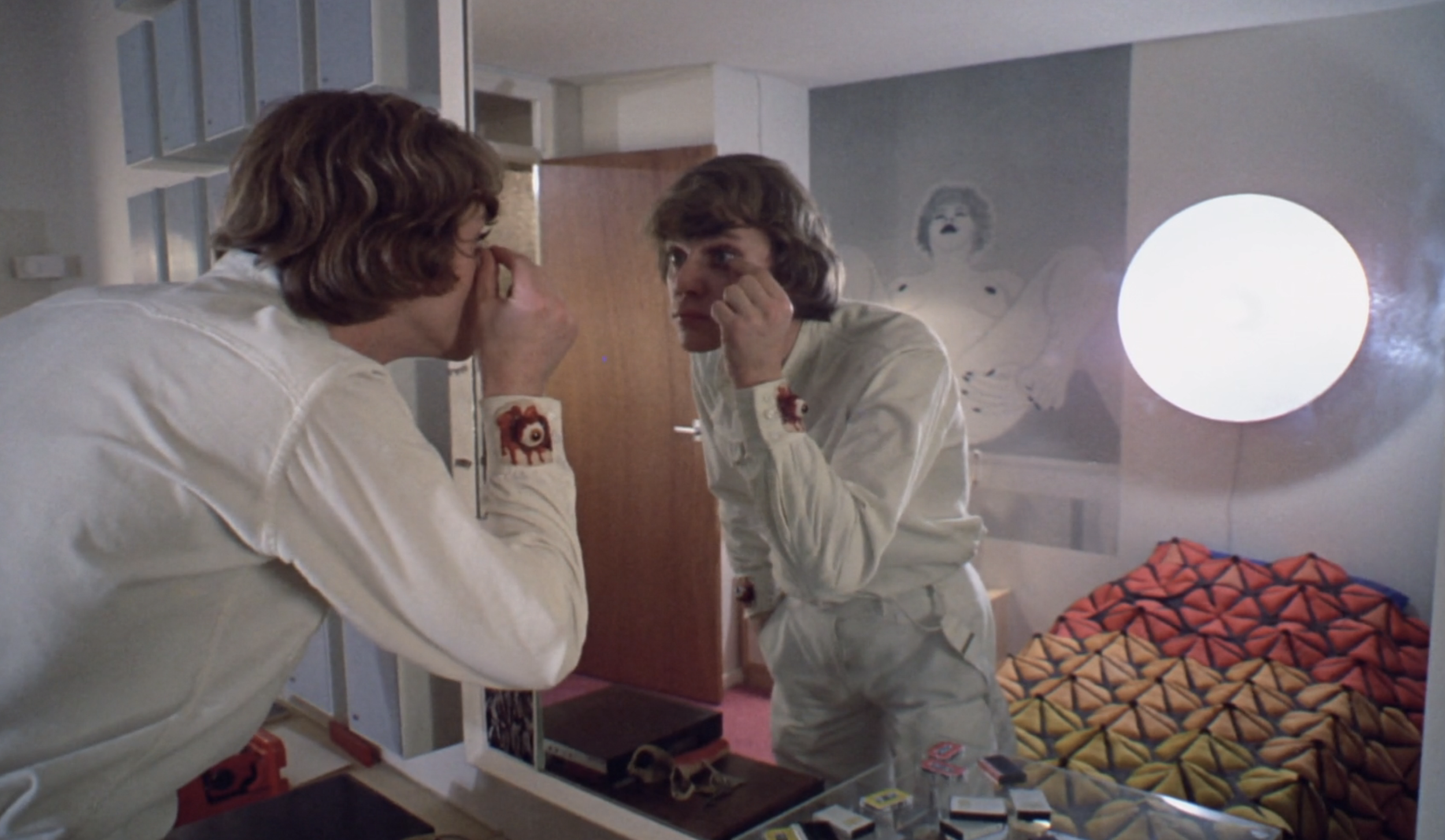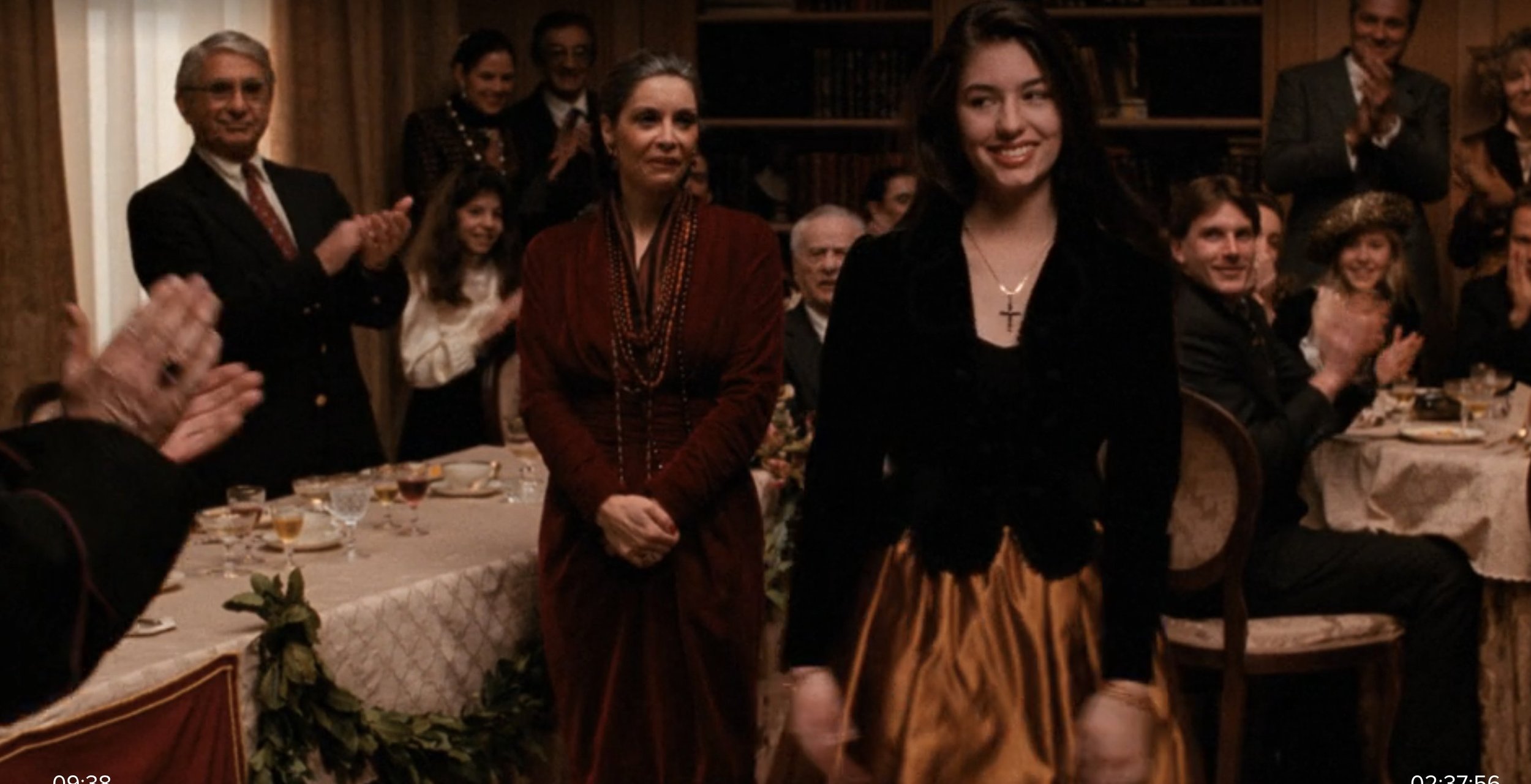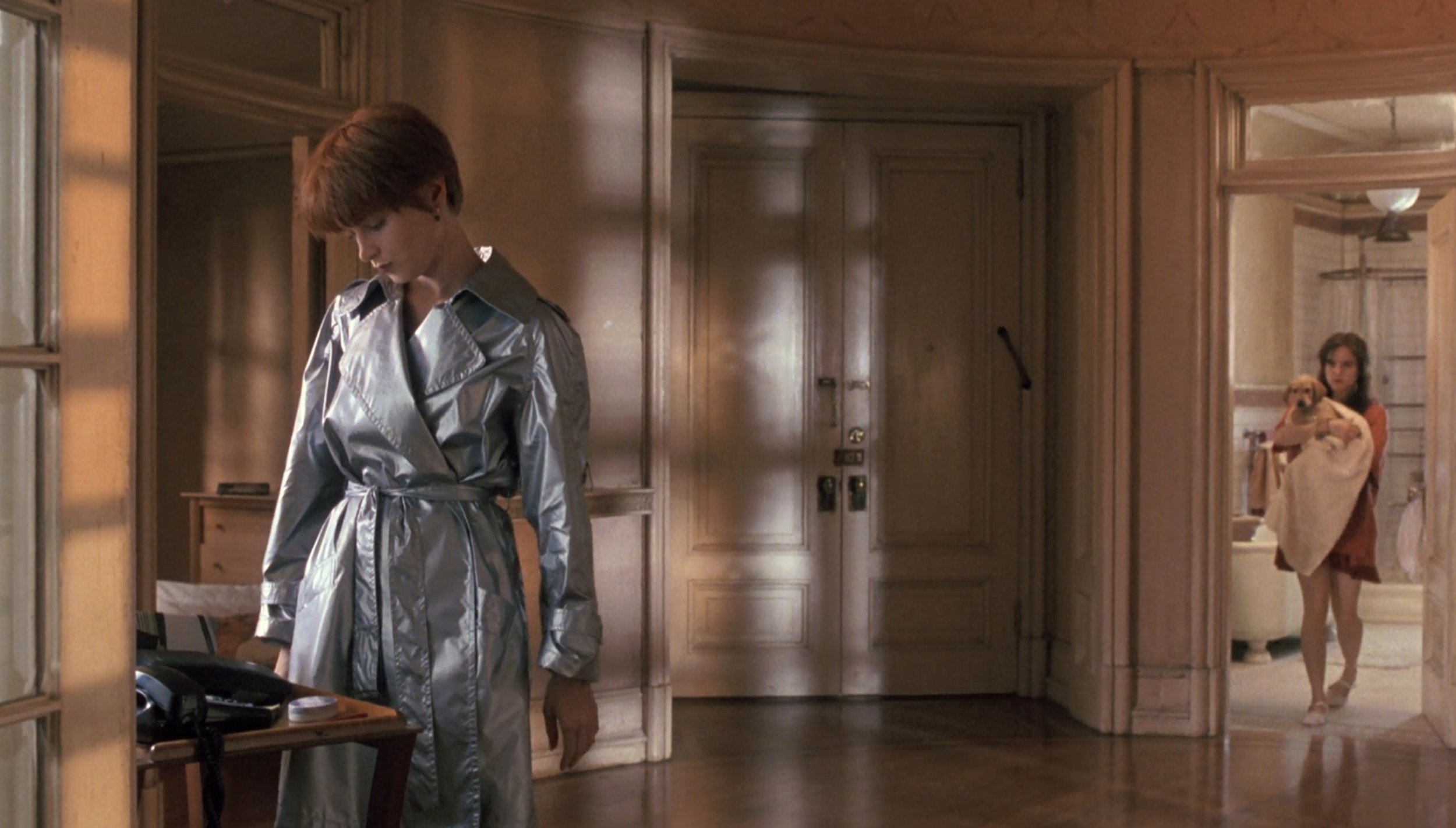WARDROBE DEPARTMENT: MILENA CANONERO
“Milena, you start with the head.” This was one of the first lessons that costume designer Milena Canonero learned from Stanley Kubrick, her self-described “great master.” I picture Kubrick, hands squared, framing her face to illustrate his point that it’s in the close-up that cinema begins and that you build outward from. It conjures the overture of A Clockwork Orange (1971), an utter jolt of cinematic bliss that begins with an onslaught of mise en scène.
Our ears prick up to Wendy Carlos’s title music for the film (a “switched-on” reworking of Purcell’s “Music For The Funeral Of Queen Mary”) as Malcolm McDowell’s Alex DeLarge leers at the camera—one eye done up with false eyelashes, and a bowler hat perched upon his overgrown moptop. As the camera glacially pulls back, we see him drinking a glass of milk with his fellow drugged-out Droogs, clad in various mutations of their gang uniform: a perversion of cricket whites paired with a codpiece, black boots, white suspenders, and unique to Alex, a pair of bloody eyeballs clamped onto each wrist like oversized cufflinks.
It’s not only one of the most provocative openings in all of cinema, but also the first appearance of Canonero’s vision onscreen. Less than two minutes in, and her premiere outing as a costume designer instantly solidified her place in film history. A half century later, she’s now one of the most illustrious of her profession—a four-time Oscar-winner who has also collaborated with fashion houses like Gucci and Prada, designed costumes for some of the world’s greatest opera houses, and, to this day, remains an ever-evolving artist. The only real connective tissue between her 40 feature films is an almost fetishistic attention to fabric, texture, and historical detail, which has allowed her to indulge her vast range and versatility. With an enduring interest not only in fashion but in fashioning fully realized characters, Canonero has said that, for her, the most important thing is to be part of the greater creative team of a film, forming the “visual memory of a movie.” I can’t think of another designer who has achieved just this—who has captured attention and established herself so firmly as a singular artist, while remaining ever committed to serving the vision of a filmmaker.
Read on at Metrograph’s Journal




